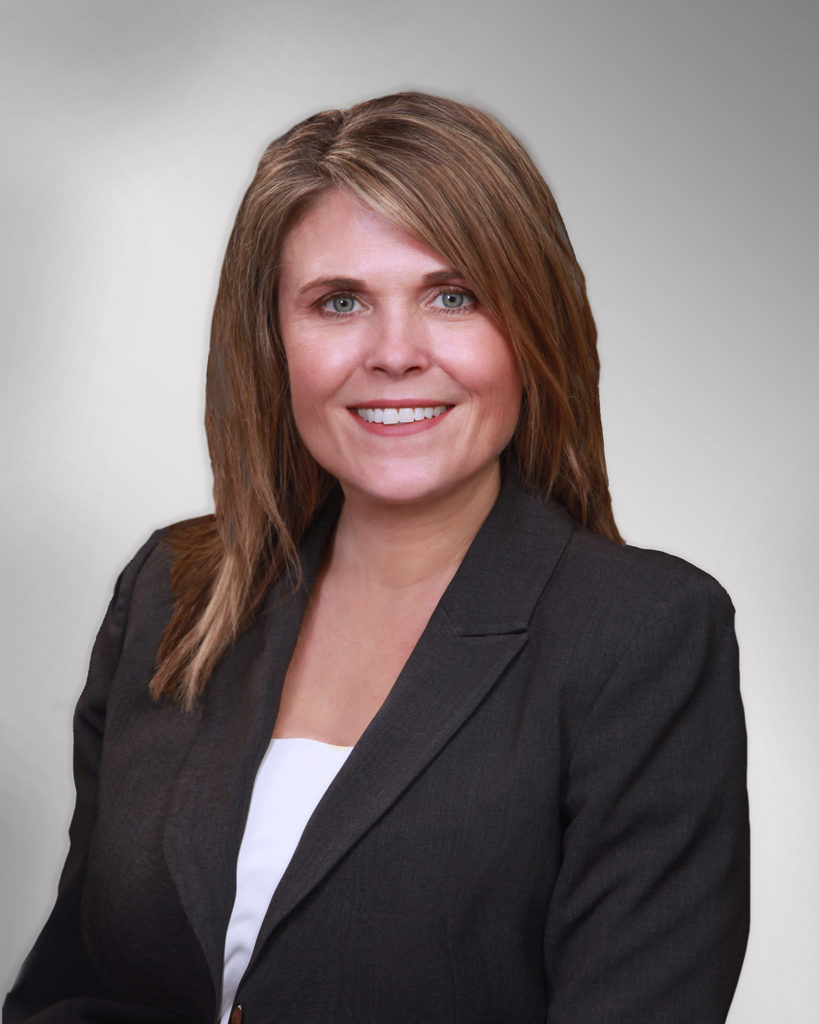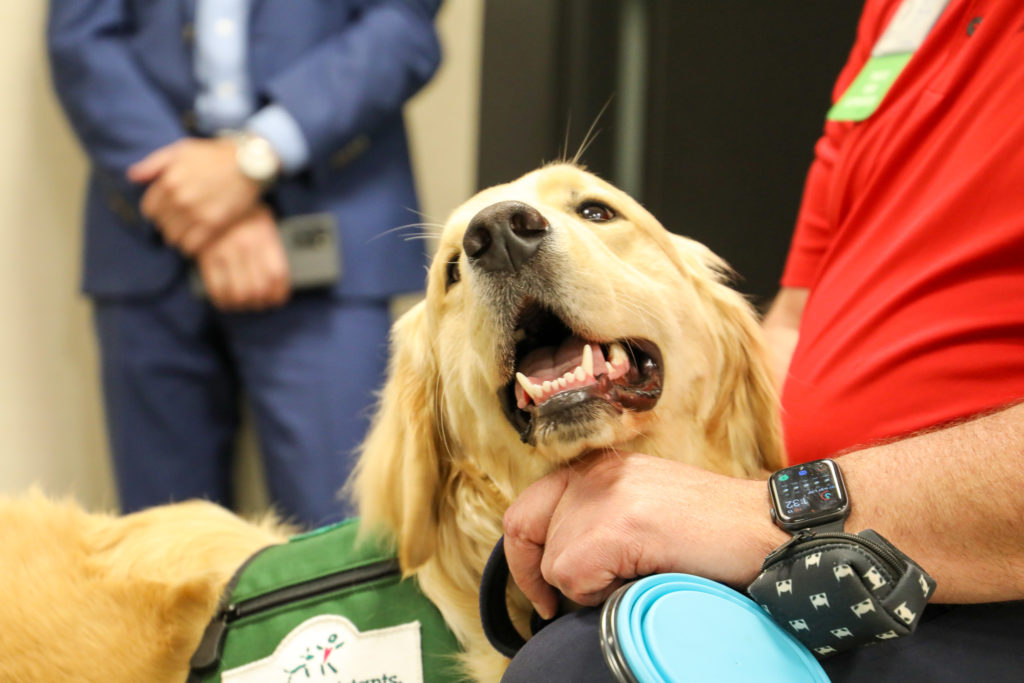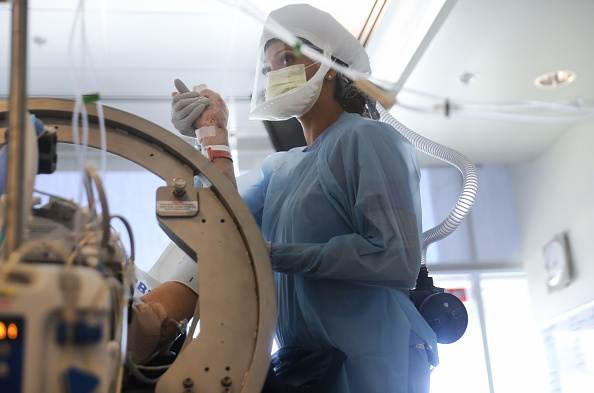Hospital nurse staffing is a complex endeavor in any set of circumstances. Introduce a pandemic in which space and treatment needs outstrip the capacity of available professionals, and you have a situation that may seem unsolvable at times. Still, difficult situations tend to breed innovation, and US hospitals have risen to meet the nurse shortage challenge in a variety of ways.
“COVID-19 really has placed a strain on the system,” says Kendra McMillan, a registered nurse and senior policy adviser for nursing practice and work environment at the American Nurses Association.

“It illuminated already long-standing staffing issues at health systems. We’re now seeing another wave of increased demand for treatment, but this one consists of people in advanced stages of other diseases due to delayed care. This has led to nurses taking more and longer shifts and more overtime, sometimes without breaks. They are working to keep up with increased demand, and that takes a toll.”
McMillan says another serious issue is the departure of experienced nurses and their replacement with much younger colleagues. “Many older nurses who were approaching retirement when the pandemic began went ahead with their departure plans early, which means a lot of new graduates and early career nurses are moving into roles more seasoned nurses once held,” she says. “We call this the ‘experience complexity gap.'”
Anne Herleth, research and advisory principal at The Health Management Academy in Virginia, agrees that there is an experience shortage on top of existing staff shortages. “You may be able to increase nursing school enrollment in the short term, but you can’t replicate long-standing skill sets overnight,” she says.

“It’s possible to bring in educators virtually to offer expertise, which can be expensive and difficult but has the potential to be helpful. And you also have to think about how nurse experience levels fit into emerging models of care like home-based and ambulatory services. You have to redevelop nurses who have been trained in acute care so they can move into these areas.”
Compounding existing challenges is an increase in workplace violence against nurses, both from patients and their family members. “Nursing professionals are enduring hostile conditions these days,” McMillan says. “The environment is detrimental to their psychological and physical health, and depression and anxiety rates are higher, as are rates of attempted and completed suicide.”
Seeking nurse staffing solutions
All of these factors taken together, it’s not surprising that leaders tasked with hiring, retaining and scheduling hospital nurses have their hands more than full. They must think in multiple dimensions at all times in order to be effective, according to Herleth. “They have to consider the immediate, short-term needs of the facility as well as its longer-term benefit,” she says. “They also need to make innovation happen from the top down and from the bottom up. All of these things are critical.”
Herleth says one way to improve job efficiency and satisfaction is to ensure that nurses are able to use the full complement of their skills. “You want nurses working at ‘top of license,'” she explains. “That means they are practicing to the full extent their licensure allows. Sitting at a computer entering endless information or spending time clicking through a lot of different screens takes time away from the bedside and compromises their ability to work efficiently. When nurses have worked hard to obtain additional credentials, they need to be using them in order to feel fulfilled.”
According to Herleth, having hospitals work more closely with nursing schools offers possible answers as well. “Schools and health system leaders have the opportunity to become better aligned in training and preparing nurses to deliver care in evolving settings,” she says.
“The work environment nurses are entering is so much more fast-paced than it used to be, and health systems can only do so much to support employees in the first year after nursing school, which is when a lot of the turnover happens. There’s room for improvement and collaboration from all sides.”
Finding common ground
So how can challenges be addressed practically on the nursing unit, in a way that benefits both staff and patients? Janel Allen, senior vice president and chief people officer for Children’s Hospital and Medical Center in Omaha, Neb., says the facility meets its mission by increasing connections among nurses, their colleagues and their employer.

“We know our nursing team members are essential to achieving the patient experiences and outcomes we want,” Allen says. “We are focused on listening and meeting their needs, and there are a number of ways we accomplish that.”
Allen says the hospital has implemented a discretionary bonus program to allow staff members to share in its success, and a Commitment Award program financially rewards team members for staying in the hospital’s employ. A paid community volunteering initiative called Be Involved offers the opportunity to seek fulfillment through giving back. New paternity leave benefits help families bond with their newborn and adopted children. The hospital is updating its staffing model to include licensed practical nurses. And a robust Employee Resource Group program offers staff members a way to connect with each other, share common interests, encourage belonging and diversity and support professional development and leadership.
Children’s also had team members help design a nursing residency initiative for new graduates. And it hosts a program called S2RN in which nursing students are sponsored for employment, receive tuition support and then continue working at the hospital after graduation. “We are developing a ‘best place to nurse’ environment where team members can find joy and meaning in the workplace,” Allen says. “We also have smaller initiatives like ‘zen dens’ where nurses can relax during a shift, and a morale support dog focused solely on easing tension among employees.”

According to Allen, nurse feedback shows the hospital’s efforts are working. “Nurses tell us they feel heard, cared for and valued,” she notes. “They say they feel empowered to be part of shaping the hospital’s future, and that loyalty is showing up in our retention metrics.”
Moving forward
McMillan says technology and teamwork will be at the forefront of nurse staffing solutions in the future. “We are seeing hospitals implement digital scheduling and recruitment platforms to screen and vet candidates and fill jobs quickly,” she says. “There also are forecasting tools nurse leaders can use to track patient flow and better match staff assignments. Health systems are providing well-being initiatives at work and making sure nurses’ mental health is supported. Respite rooms offer mental and physical breaks, and team members are encouraged to check in on each other. Even robotic technology is being used to complete simple tasks like delivering supplies so nurses don’t have to.”
Carrying the momentum forward, the ANA recently launched a Nurse Staffing Task Force to devise long-term, sustainable solutions. It also convened a Nurse Staffing Think Tank to address how recommendations can be implemented.
“Nurse leadership is stepping in to take the burden off of staff members, and healthy work environments are a priority,” McMillan says. “There are some very creative things going on in nursing.”
If you liked this article, sign up for SmartBrief for Health Care Leaders. It’s among SmartBrief’s more than 250 free industry-focused email newsletters.
